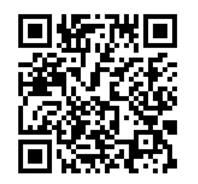Motivation
Computational Thinking (CT) is a thought process used for formulating problems with solutions to be carried out by an information-processing agent [1]. Wing positioned CT as important as reading, writing, and counting skills [2]; studies have shown that CT could alleviate one's higher-order thinking skills and improve problem-solving skills [3–6].
"Computational Thinking is the thought processes involved in formulating a problem and expressing its solution in a way that a computer—human or machine—can effectively carry out." (Cuny & Wing, 2012)
Teachers play vital roles in educational activities, so exploring their understandings and perceptions is necessary. The adaptation and the delivery of CT concepts in practices require thorough studies to explore and determine appropriate supports to assist teachers in conducting the most effective ways of teaching and learning CT. Efforts have focused on K-12 practices worldwide, attempting to understand teachers' attitudes toward CT and their intention to integrate CT into their classrooms [7]. However, in the context of higher education in the Netherlands, teachers' understanding of CT concepts and their intention to CT integration in practices still need more research.
Various models can be used to determine a technology's use in the future and investigate the relationship between users with technological skills and experiences, for example, the well-known basic Technology Acceptance Model (TAM) from Davis (1989). The Unified Theory of Acceptance and Use of Technology (UTAUT) model was developed from former models [8]. It can explain 70% of the variance in behavioral intention and outperform the former models. The UTAUT model identifies the main factors influencing users' intention to embrace new technology in their practices. In this case, the question is if educators intend to integrate CT into their education practices and their interpretation of CT. The intention to make use of CT, in this case, is influenced by the performance expectancy (PE) – the degree to which one believes that adapting CT skills can improve work performance; effort expectancy (EE) – the degree to which one finds CT skills easy to adapt in practices; social influence (SI) – the degree to which one recognizes that important people believe one should adapt CT skills into their practices; and facilitating conditions (FC) – the degree to which one believes that an organizational and technical infrastructure exists to support the adaptation of CT skills in practices.
In this study, following Specht (2019), by combining items adopted from the UTAUT model and items from other existing studies [7, 9], we aim to collect data to explore teachers' perception of CT and the key influencing factors on teachers' intention to integrate CT into their teaching and learning practices (TL).
Please contribute to the research here: https://tinyurl.com/2ho4sfzo

References
[1] J. a. S. Cuny, Larry and Wing, Jeannette M., "Demystifying computational thinking for non-computer scientists," unpublished
[2] J. M. Wing, Computational thinking. Magazine Communications of the ACM - Self managed systems CACM, 2006, pp. 33-35.
[3] Y. B. Kafai and Q. Burke, "Computer programming goes back to school," Phi Delta Kappan, vol. 95, pp. 61-65, 2013.
[4] G. Fessakis, E. Gouli, and E. Mavroudi, "Problem solving by 5-6 years old kindergarten children in a computer programming environment: A case study," Computers & Education, vol. 63, pp. 87-97, Apr 2013.
[5] S. Einhorn, "MicroWorlds, Computational Thinking, and 21st Century Learning," 2012.
[6] J. Richards, "Computational thinking: a discipline with uses outside the computer lab?," Computer Weekly, pp. 52, Jun. 2007.
[7] SPECHT, M., & JOOSSE, R. J. (2019). Technology Acceptance and Teacher Attitude for Computational Thinking in the Netherlands. CoolThink@ JC, 113.
[8] Venkatesh, V., Morris, M.G., Davis, G.B. and Davis, F.D. (2003) User Acceptance of Information Technology: Towards a Unified View. MIS Quarterly, 27, 425-478.
[9] Ling, U.L., Saibin, T.C., Labadin, J., & Aziz, N.A. (2017). Preliminary Investigation: Teachers’ Perception on Computational Thinking Concepts. Journal of Telecommunication, Electronic and Computer Engineering, 9, 23-29.